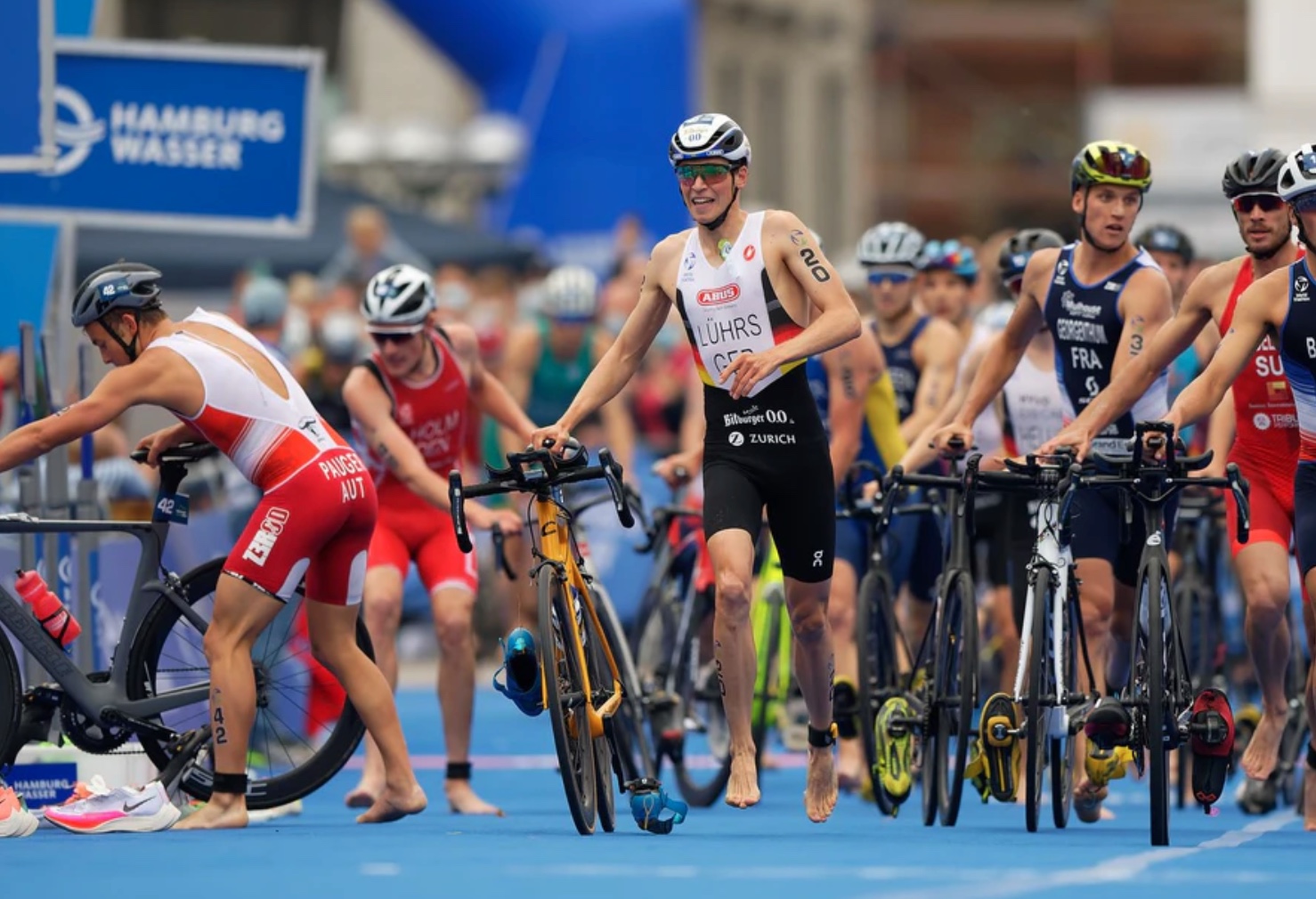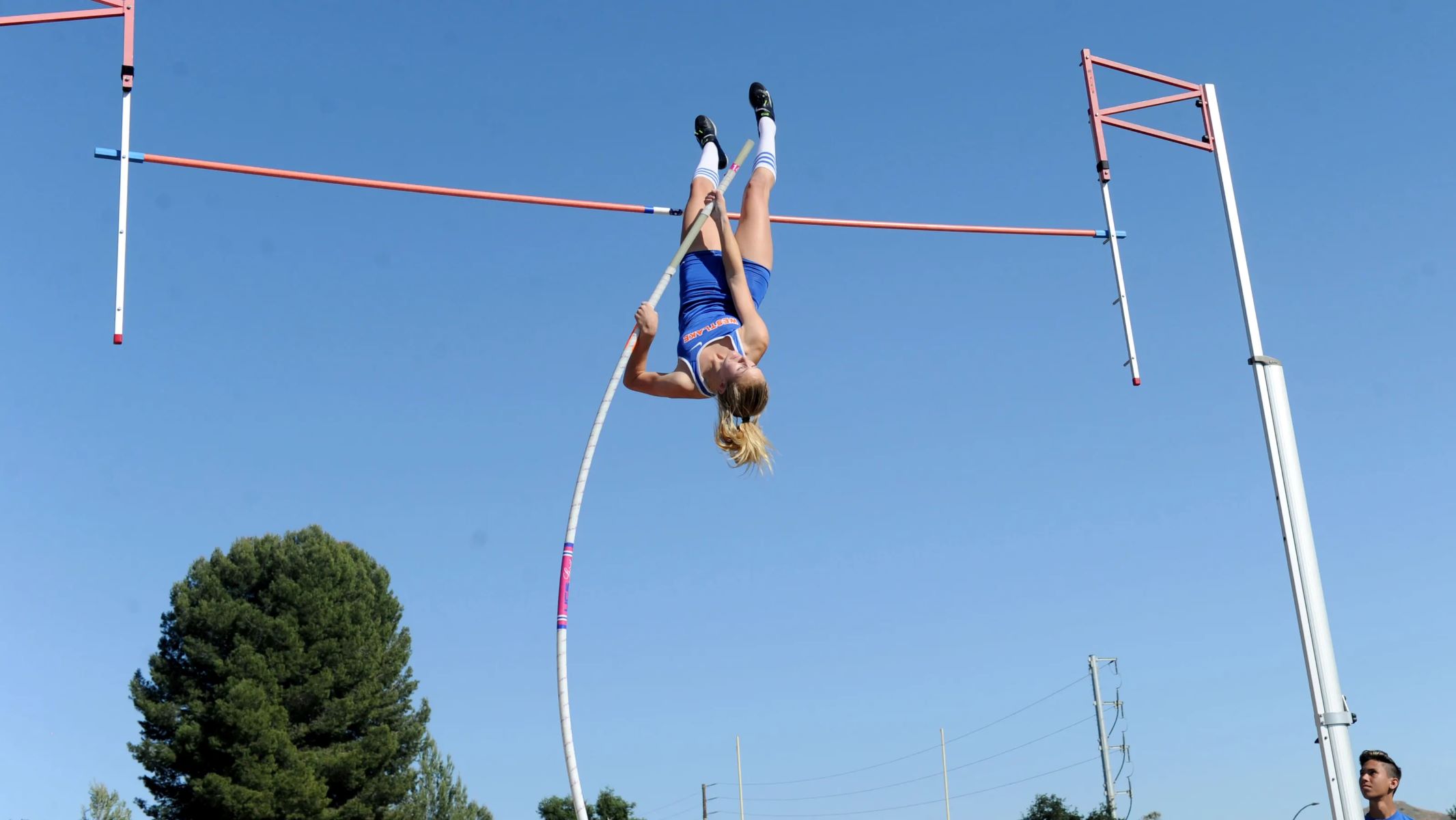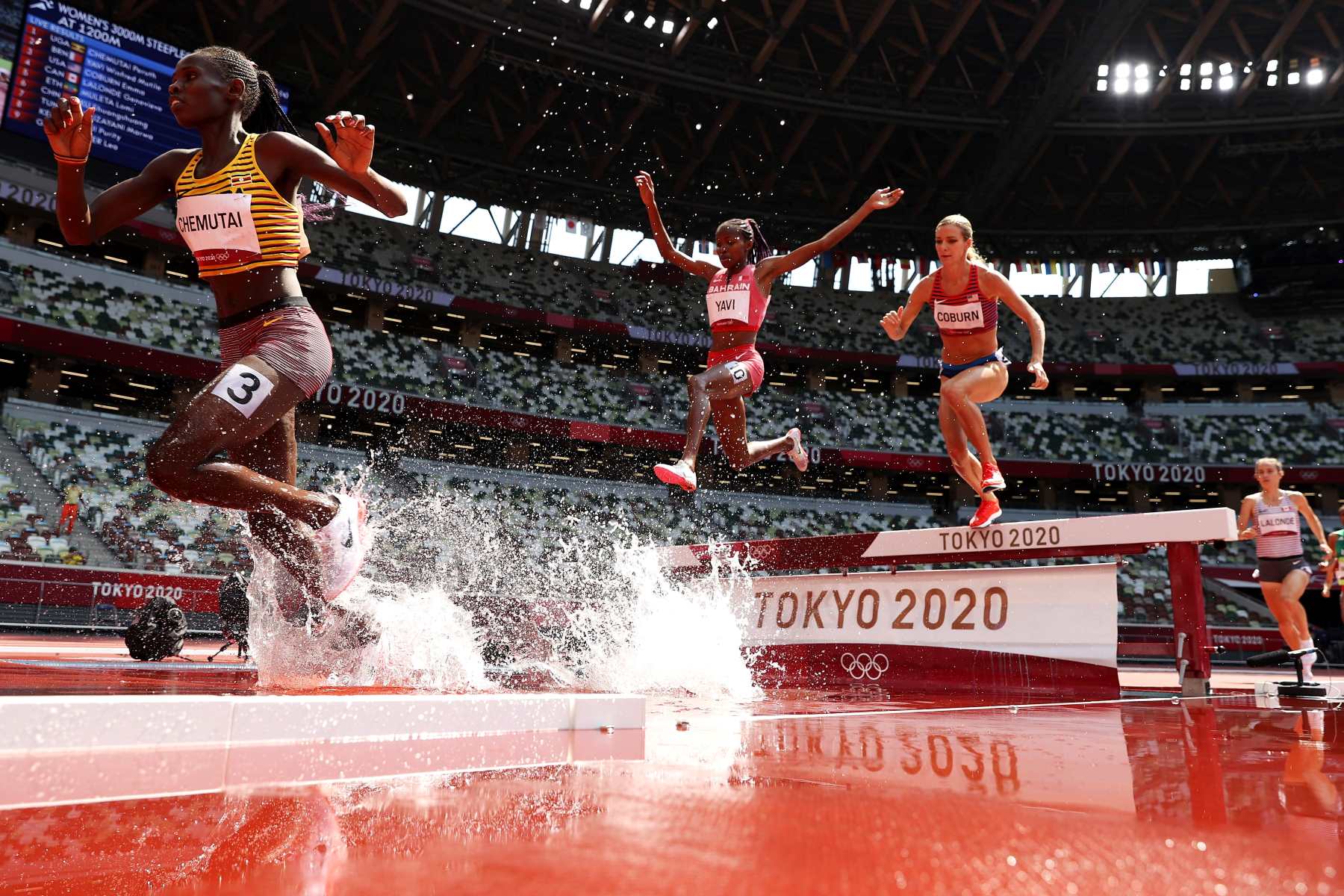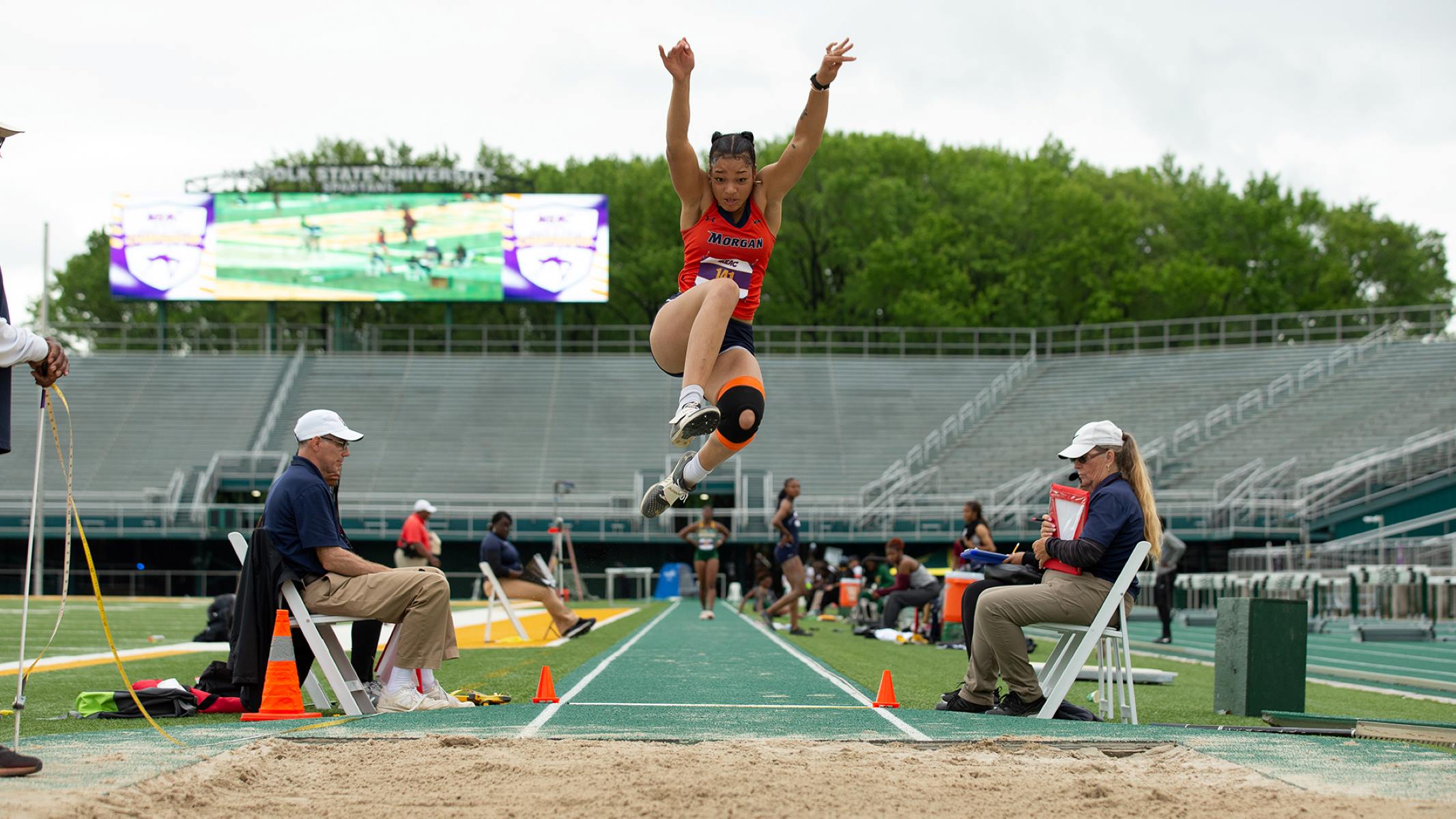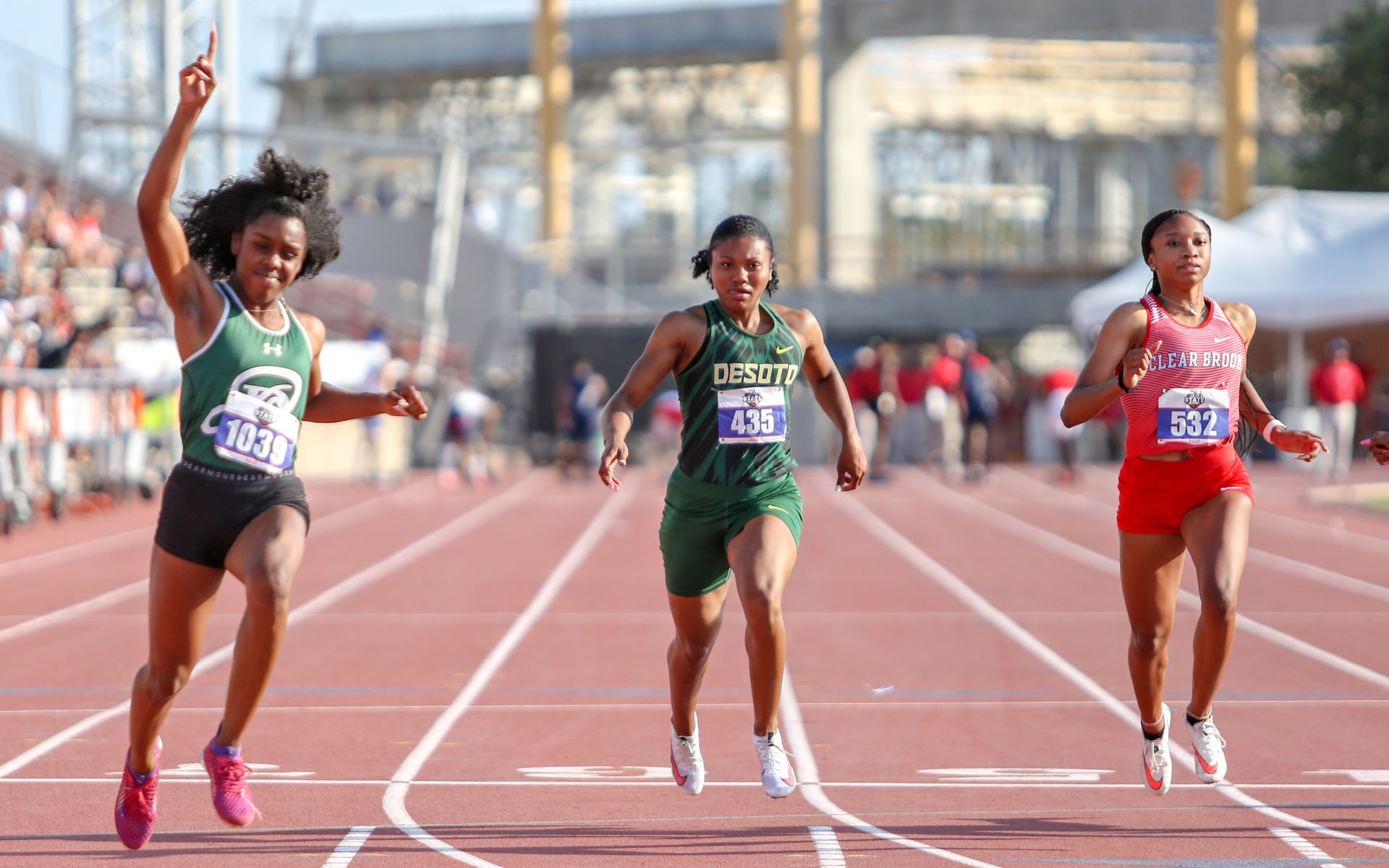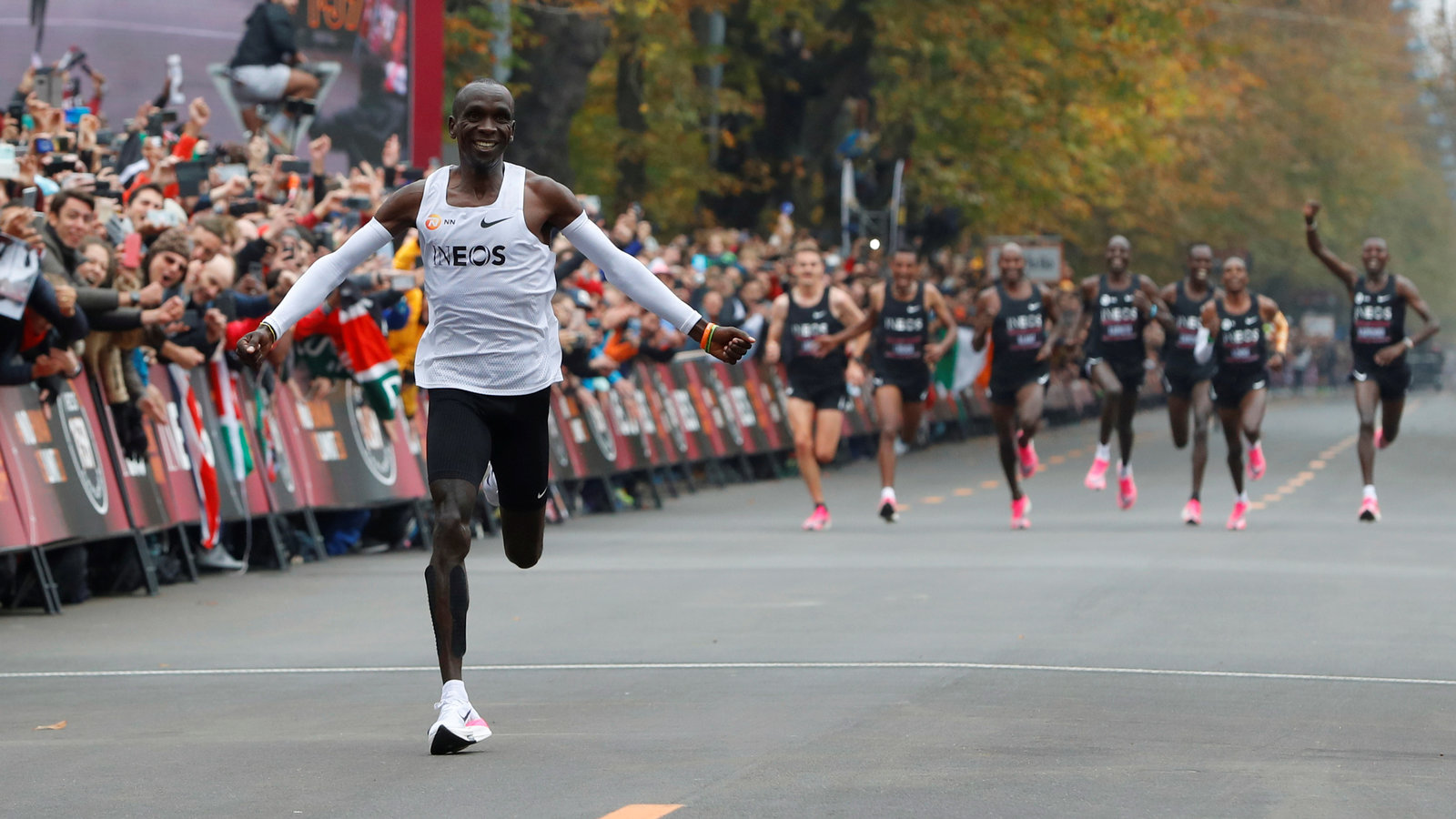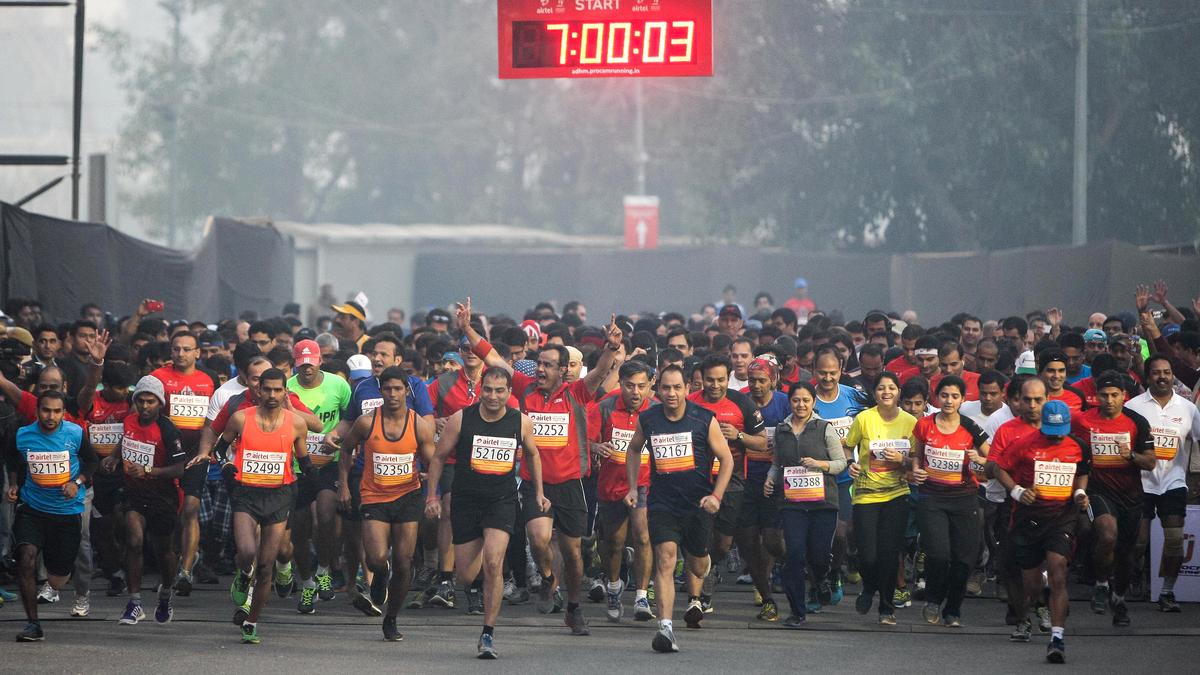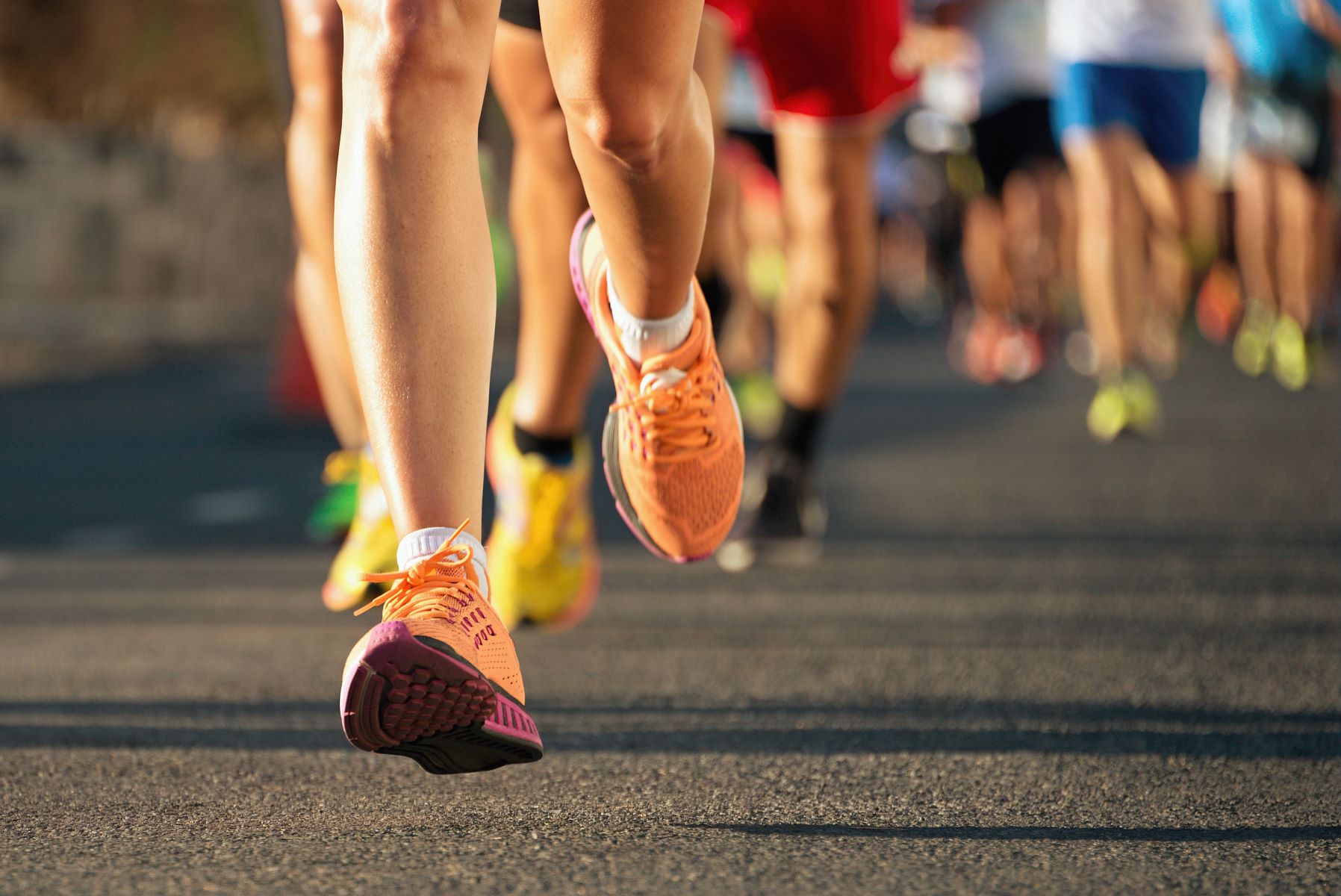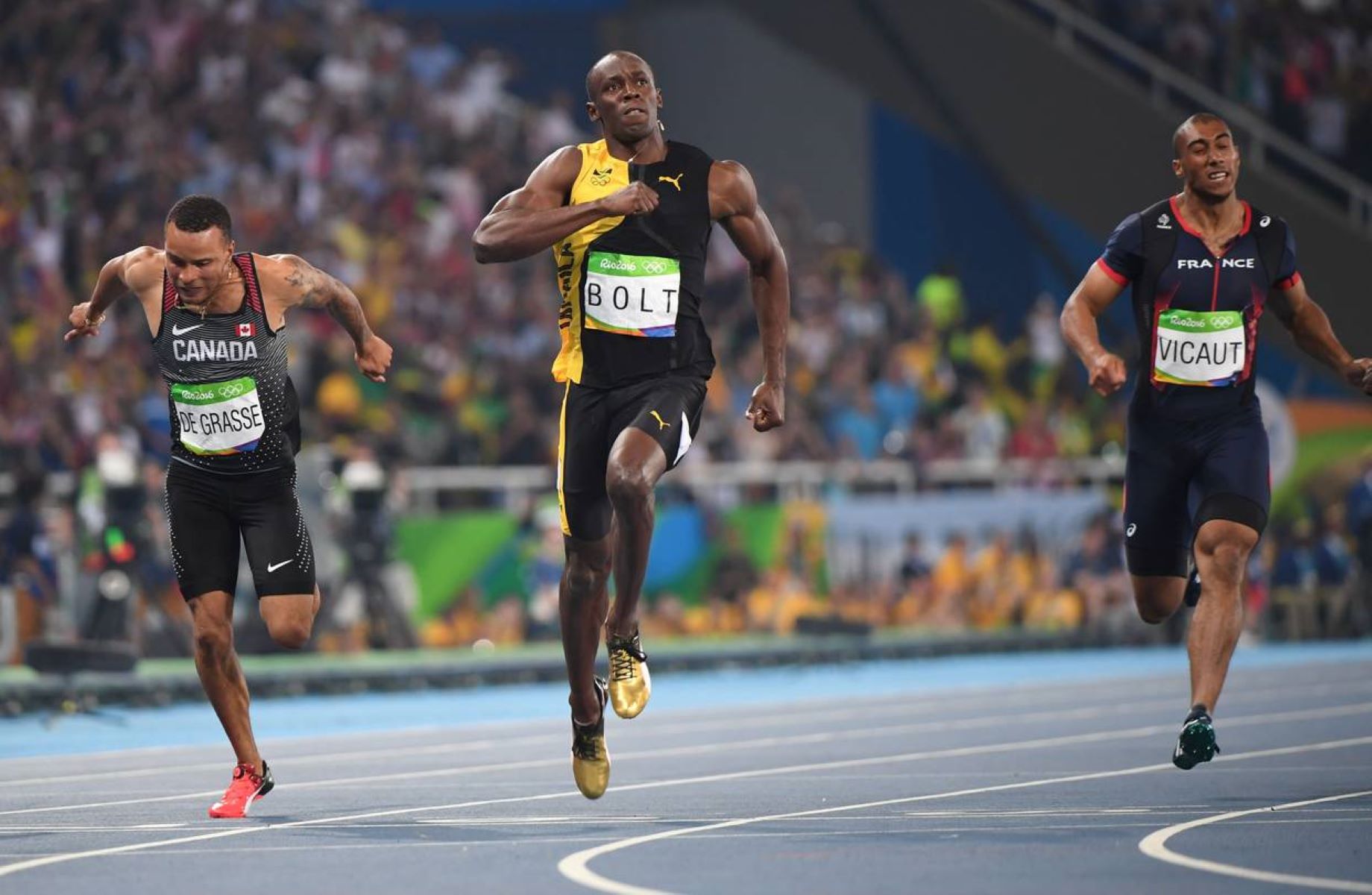

Featured
When Does Track And Field Start In Rio
Published: September 16, 2023
Discover when the track and field events begin in Rio. Stay updated on the latest schedules and be a part of the featured action at the Olympics.
Introduction
Welcome to the exciting world of Track and Field in the Rio Olympics! As the most prestigious and anticipated global sporting event, the Olympic Games bring together the world’s finest athletes to compete in various sports, including Track and Field.
Track and Field, also known as athletics, is often considered the centerpiece of the Olympic Games. It encompasses a wide range of events, including sprints, hurdles, middle-distance and long-distance races, jumping, throwing, and combined events. With its rich history and tradition, Track and Field has captivated audiences for centuries, showcasing the incredible athleticism and determination of athletes from all corners of the globe.
The Rio Olympics, held in 2016, took place in Rio de Janeiro, Brazil, and provided an exceptional platform for athletes to shine. The games were held in different venues across the city, with the Maracanã Stadium serving as the centerpiece.
As we delve into the exciting details of Track and Field in the Rio Olympics, we will explore the competition schedule, notable athletes to watch out for, and venue information. So, get ready to cheer for your favorite athletes as they push their boundaries and strive for victory in the iconic events of Track and Field!
Overview of Track and Field in the Olympic Games
Track and Field has been a prominent part of the Olympic Games since its inception in ancient Greece. The sport has evolved over time and has become one of the most-watched and celebrated events in the modern Olympics.
Track and Field events in the Olympic Games consist of various disciplines, ranging from sprints to field events. Some of the most popular events include the 100-meter sprint, 110-meter hurdles, long jump, high jump, shot put, javelin throw, and marathon.
One unique aspect of Track and Field is its ability to showcase both individual skill and team spirit. While athletes compete individually in most events, their performances contribute to their country’s overall medal count, fostering a sense of national pride and unity.
The Olympic Games provide an unparalleled platform for athletes to showcase their talents. It is a culmination of years of dedication, hard work, and training. Athletes from all corners of the world come together to compete on the grandest stage, vying for gold, silver, and bronze medals.
Track and Field events are not only physically demanding but also mentally challenging. Athletes must possess not only exceptional speed, strength, and agility but also resilience, determination, and a strong mindset to overcome the pressure of competing at the highest level.
In addition to the individual events, the Olympic Games also feature a number of relay races, such as the 4×100-meter and 4×400-meter relays. These events require seamless coordination and precise baton exchanges among team members, adding an exciting element of teamwork to the competition.
Over the years, the Olympic Games have witnessed iconic moments in Track and Field, with legendary athletes etching their names in history. From Usain Bolt’s spectacular sprinting dominance to Florence Griffith Joyner’s world records, these extraordinary feats have captivated audiences worldwide and left a lasting legacy in the sport.
As we delve into the specifics of the Track and Field events at the Rio Olympics, let us celebrate the rich history, fierce competition, and unparalleled skill that make this sport an everlasting symbol of athleticism and human achievement.
Rio Olympics Timeline
The Rio Olympics, held from August 5 to August 21, 2016, marked a historic moment for Brazil as the country hosted the prestigious event for the first time. The games brought together thousands of athletes from around the world to compete in a variety of sports, including Track and Field.
Preparations for the Rio Olympics began years in advance, with extensive planning and construction to ensure that the venues were ready to host the world’s best athletes. The Opening Ceremony, held on August 5, 2016, at the Maracanã Stadium, set the stage for two weeks of thrilling sporting action.
The Rio Olympics officially commenced with the lighting of the Olympic cauldron, signaling the start of the competitions. Over the course of the following days, athletes from various countries competed in a wide range of sporting events, including Track and Field.
Throughout the duration of the games, the spotlight shone brightly on the Track and Field events as athletes displayed their prowess in running, jumping, and throwing. The competitions took place at the Olympic Stadium, known as Estádio Olímpico Nilton Santos.
The Olympic Stadium featured a state-of-the-art track and field facility, designed to provide optimal conditions for athletes to achieve their best performances. From the lightning-fast sprints on the track to the graceful leaps in the long jump pit, every event showcased the immense talent and dedication of the participants.
As the days went by, the intense competitions in Track and Field events thrilled audiences worldwide. The events were spread across the entire duration of the Olympics, ensuring that spectators had ample opportunities to witness the exhilarating performances.
Finally, on August 21, 2016, the Closing Ceremony marked the end of the Rio Olympics and officially concluded the Track and Field competitions. The diverse range of sports and the incredible achievements of the athletes during the games were celebrated in a grand spectacle, leaving lasting memories for athletes and spectators alike.
The Rio Olympics not only provided an extraordinary platform for athletes to showcase their abilities but also showcased the rich culture and vibrant spirit of Brazil. It was a momentous occasion that brought people from all walks of life together to celebrate the power of sport and the pursuit of excellence.
As we look back on the Rio Olympics, we remember the triumphs, the records broken, and the unity that the event brought to the world. The timeline of the Rio Olympics serves as a testament to the indomitable spirit of the athletes and the enduring legacy of the Olympic Games.
Athletics Competition Schedule in Rio
The athletics competition in the Rio Olympics featured a jam-packed schedule spanning several days, allowing spectators to witness the thrill and excitement of Track and Field events. From sprints to relays to field events, the schedule offered a diverse range of competitions and opportunities for athletes to showcase their skills.
The athletics events kicked off on August 12, 2016, and continued until August 21, 2016. During this period, athletes from all over the world took to the track, field, and throwing areas to battle it out for Olympic glory.
Each day was filled with a multitude of events, ensuring that there was always something exciting happening for the spectators. The program included a mix of preliminary rounds, heats, semifinals, and finals, with athletes competing across various disciplines.
The schedule for the athletics events in Rio was carefully crafted to provide maximum viewing opportunities for audiences. From the early morning sessions to the evening sessions under floodlights, there was something for everyone to enjoy.
One of the highlights of the athletics competition was the men’s and women’s 100-meter sprint, often considered the blue-ribbon event of the Olympics. This thrilling race took place on August 14 and saw the fastest sprinters in the world go head-to-head for gold.
Other exciting events included the 110-meter hurdles, where athletes showcased their speed, precision, and agility in leaping over obstacles. The high jump and long jump events mesmerized spectators with incredible feats of athleticism and grace.
In addition to individual events, relays also played a significant role in the athletics competition. The men’s and women’s 4×100-meter and 4×400-meter relays brought together the fastest runners from each country, showcasing their teamwork, baton exchanges, and raw speed.
The throwing events, such as shot put, discus throw, and javelin throw, captivated audiences with displays of impressive strength and precision. These events highlighted the raw power of the athletes and their ability to propel objects incredible distances.
The schedule for the athletics competition in Rio allowed spectators to immerse themselves in the excitement of these events, providing ample opportunities to witness history in the making. Whether it was a record-breaking performance or a tightly contested race, each event left spectators on the edge of their seats.
As we reflect on the athletics competition schedule in Rio, we remember the moments of triumph, the displays of athleticism, and the lifelong memories created during these incredible events. The schedule ensured that Track and Field enthusiasts and casual viewers alike witnessed the very best of sporting excellence at the Rio Olympics.
Opening and Closing Ceremonies for Track and Field
The opening and closing ceremonies for Track and Field in the Rio Olympics were spectacular celebrations that set the stage for the thrilling competitions to come and bid farewell to two weeks of exhilarating sporting action. These ceremonies were a testament to Brazil’s rich cultural heritage and its passion for sports.
The opening ceremony, held on August 12, 2016, at the Maracanã Stadium, captured the essence of Brazil’s vibrant and diverse culture. The ceremony began with a dazzling display of music, dance, and visual effects, showcasing the country’s cultural diversity and its love for music and dance.
As the ceremony progressed, athletes from various countries paraded into the stadium, proudly representing their nations. Track and Field athletes marched in waving their flags, providing a preview of the exceptional talent that would soon grace the track and field events.
One of the most memorable moments of the opening ceremony was the lighting of the Olympic cauldron. A symbolic torch relay lit by Brazilian marathon runner Vanderlei Cordeiro de Lima culminated in the lighting of the cauldron, symbolizing the commencement of the Olympic Games.
The closing ceremony, held on August 21, 2016, had an equally mesmerizing display, bidding farewell to the Rio Olympics and acknowledging the achievements of the athletes in Track and Field. The ceremony celebrated the spirit of unity and camaraderie that the Olympics had fostered among athletes from around the world.
During the closing ceremony, athletes entered the stadium once again, but this time without the competitive pressure. They wore smiles on their faces, waving to the crowd and embracing the unforgettable experiences they had during the games.
The closing ceremony featured captivating music, dance performances, and fireworks that illuminated the night sky. The performances symbolized the joy and celebration of a successful Olympic Games and paid tribute to the dedication and resilience of the athletes who had competed in Track and Field.
As the final moments of the closing ceremony unfolded, the Olympic flag was lowered, and the Olympic flame, a symbol of unity and friendship, was extinguished. This marked the symbolic end of the Rio Olympics and the passing of the torch to the next host city.
The opening and closing ceremonies for Track and Field in the Rio Olympics were not only grand spectacles but also poignant reminders of the values and principles that the Olympics embody. They celebrated the diversity, talent, and competitive spirit of the athletes while uniting people from all walks of life in a shared celebration of humanity.
As the curtain fell on the opening and closing ceremonies, the Rio Olympics left an indelible mark on the world of Track and Field, inspiring future generations to pursue their athletic dreams and continue the legacy of the Olympic Games.
Notable Athletes to Watch Out For
The Rio Olympics brought together an impressive lineup of athletes in Track and Field, each with their own unique talents and achievements. These exceptional individuals captivated audiences with their extraordinary performances, leaving a lasting impact on the world of sports. Let’s take a closer look at some of the notable athletes to watch out for in the Rio Olympics.
Usain Bolt – Often regarded as the fastest man in the world, Usain Bolt from Jamaica was a definite standout in the Track and Field events. Bolt had already made a name for himself with multiple world records and Olympic gold medals from previous games. Spectators eagerly anticipated his races, hoping to witness his lightning-fast sprints and signature celebrations.
Allyson Felix – Known for her versatility and consistency, Allyson Felix from the United States was a force to be reckoned with in multiple events. She exhibited remarkable speed and endurance in both sprint and relay events, capturing the hearts of fans around the world.
Mo Farah – A long-distance running champion from Great Britain, Mo Farah amazed audiences with his strength and stamina. Farah dominated the track in events such as the 5,000 meters and 10,000 meters, showcasing his incredible speed and tactical racing abilities.
Ashton Eaton – As the reigning Olympic champion and world record holder in the decathlon, Ashton Eaton from the United States was a standout athlete to watch. The decathlon showcases an athlete’s versatility across ten different events, and Eaton’s exceptional performances established him as a true multi-event superstar.
Genzebe Dibaba – Hailing from Ethiopia, Genzebe Dibaba was a force to be reckoned with in middle-distance events. She held multiple world records and displayed exceptional speed and endurance in events such as the 1500 meters. Spectators awaited her races with anticipation, marveling at her extraordinary talent.
Renaud Lavillenie – A French pole vaulter, Renaud Lavillenie was known for his incredible heights and technical proficiency. He consistently challenged the boundaries of the sport, thrilling spectators with his gravity-defying jumps and record-breaking performances.
These are just a few of the many exceptional athletes who graced the Track and Field events in the Rio Olympics. Their dedication, skill, and talent made them stand out among the best in the world, leaving a lasting legacy in the sport.
As fans and spectators, we eagerly anticipated the performances of these notable athletes, holding our breaths as they pushed their limits and showcased their incredible abilities on the track and in the field. They inspired and entertained us, reminding us of the extraordinary capabilities of the human body and spirit.
As we reflect on the Rio Olympics, we salute these remarkable athletes and look forward to witnessing the rise of new stars in the world of Track and Field in future Olympic Games.
Venue Information for Track and Field Events
The Track and Field events at the Rio Olympics took place at the Olympic Stadium, Estádio Olímpico Nilton Santos. This iconic venue, located in Rio de Janeiro, was specifically designed and equipped to host a wide range of athletic competitions.
The Olympic Stadium, often referred to as Engenhão due to its location in the Engenho de Dentro neighborhood, provided a world-class facility for athletes to showcase their skills. It boasted a state-of-the-art track, built to international standards, which offered optimal conditions for fast and competitive races.
The stadium had a seating capacity of approximately 60,000 spectators, offering ample space for fans to cheer on their favorite athletes and witness the thrilling moments of the Track and Field events. The design of the stadium ensured excellent visibility from every seat, allowing spectators to fully immerse themselves in the action.
For athletes, the Olympic Stadium provided an exceptional environment to compete at the highest level. The track was meticulously maintained to ensure optimal grip and speed, allowing sprinters and distance runners to push themselves to their limits. The field events, such as long jump and high jump, featured high-quality equipment and landing areas to facilitate the best performances.
Additionally, the stadium incorporated world-class training facilities and warm-up areas, ensuring that athletes had the necessary space and resources to prepare for their events. These state-of-the-art facilities offered a conducive environment for athletes to fine-tune their skills and focus on their performances.
Located in Rio de Janeiro, the Olympic Stadium was ideally situated in a city known for its vibrant culture, stunning landscapes, and passionate sports fans. Spectators had the opportunity to explore the surrounding areas, absorb the atmosphere of the city, and witness the fusion of Brazilian culture and Olympic spirit.
Transportation to and from the stadium was readily available, with various options including public transportation and organized shuttles. The accessibility of the venue allowed spectators to enjoy a seamless experience, ensuring they could fully immerse themselves in the excitement of the Track and Field events.
The Olympic Stadium in Rio de Janeiro provided a fitting backdrop for the spectacular performances in Track and Field. Its world-class facilities, stunning design, and convenient location created an unforgettable experience for athletes and spectators alike.
As we look back on the Rio Olympics, we remember the atmosphere, the roar of the crowd, and the incredible feats achieved within the walls of the Olympic Stadium. It will forever be etched in history as a symbol of the extraordinary talent and determination displayed in the Track and Field events of the Rio Olympics.
Conclusion
The Track and Field events at the Rio Olympics provided an unforgettable display of athleticism, determination, and human achievement. From the opening ceremony at the Maracanã Stadium to the iconic competitions at the Olympic Stadium, the Rio Olympics showcased the world’s finest athletes pushing their limits and inspiring millions around the globe.
Throughout the Olympics, spectators were captivated by the incredible performances of notable athletes such as Usain Bolt, Allyson Felix, Mo Farah, Genzebe Dibaba, Renaud Lavillenie, and many more. These individuals exemplified the highest level of skill and dedication in their respective events, leaving a lasting impression on the world of Track and Field.
The Rio Olympics demonstrated the true spirit of the Olympic Games, bringing together people from all nations to celebrate unity, sportsmanship, and the pursuit of excellence. The opening and closing ceremonies symbolized this global gathering, showcasing Brazil’s rich culture and the shared passion for sports.
The athletics competition schedule allowed fans to witness the thrill of sprints, hurdles, relays, jumps, and throws over the course of several days. The Olympic Stadium provided an exceptional venue, featuring a top-notch track and field facilities that enabled athletes to showcase their talents and achieve remarkable performances.
As we reflect on the Rio Olympics, we remember the electric atmosphere, the triumphant victories, and the unforgettable moments that unfolded on the track and in the field. The event showcased the remarkable capabilities of the human body and spirit, inspiring generations of athletes to reach for their goals and dreams.
The Rio Olympics will forever hold a special place in the hearts of sports enthusiasts and athletes. It was a celebration of diversity, unity, and the power of sports to unite people from all walks of life.
As we look forward to future Olympic Games, we anticipate the next generation of remarkable athletes who will continue to push the boundaries of what is possible in Track and Field. Their stories and achievements will inspire us to believe in our own potential and strive for greatness.
So let us celebrate the legacy of the Rio Olympics, the incredible performances of the Track and Field athletes, and the enduring spirit of the Olympic Games. The Rio Olympics will forever be etched in history as a testament to the power of sport to bring people together and ignite the Olympic flame within all of us.
